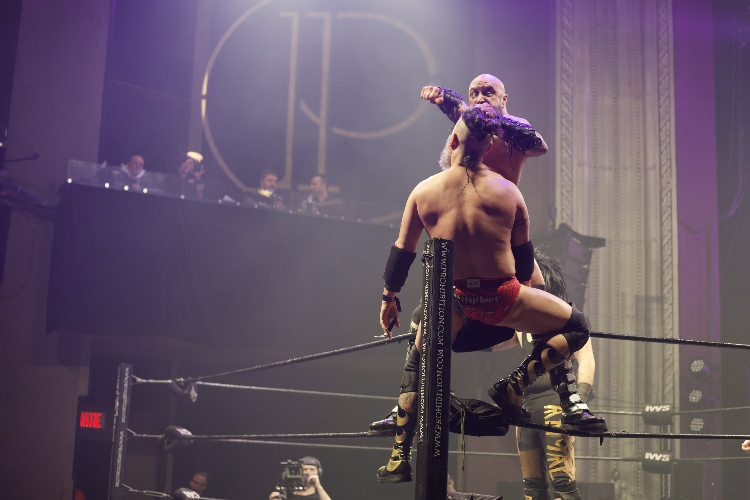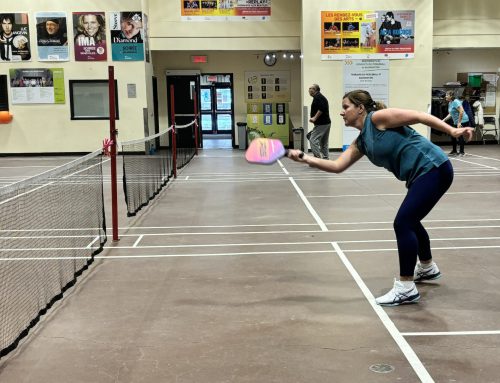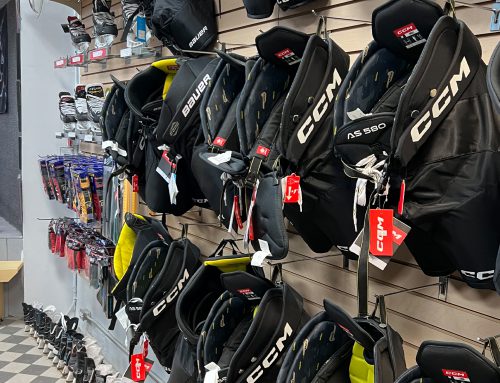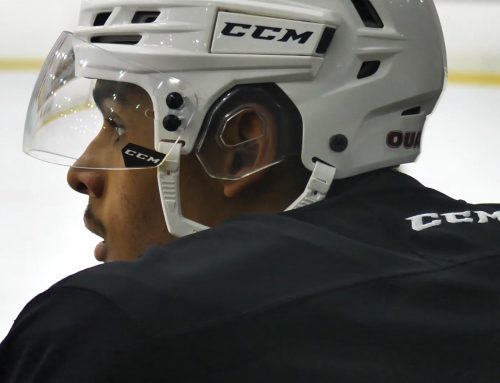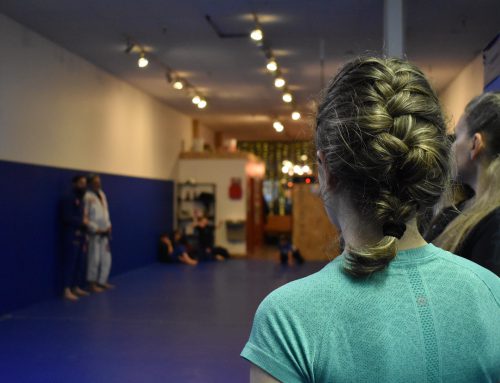BY Anna Justen & Amanda Teixeira
Nearly every seat has been filled. Red, purple and green lights shine over the raised wrestling ring and into the crowd. The thunderous echoes of bodies hitting the mat are quickly overwhelmed by exuberant cheers as one of the wrestlers is thrown over the ropes and out of the ring. The referee jumps after him as he falls onto the concrete floor.
In what looks like a scene from before COVID-19, Montrealers sit shoulder to shoulder; drinking, chanting, and sharing a laugh. It’s March 12, 2022 and tonight is the first full capacity wrestling event since the beginning of the pandemic.
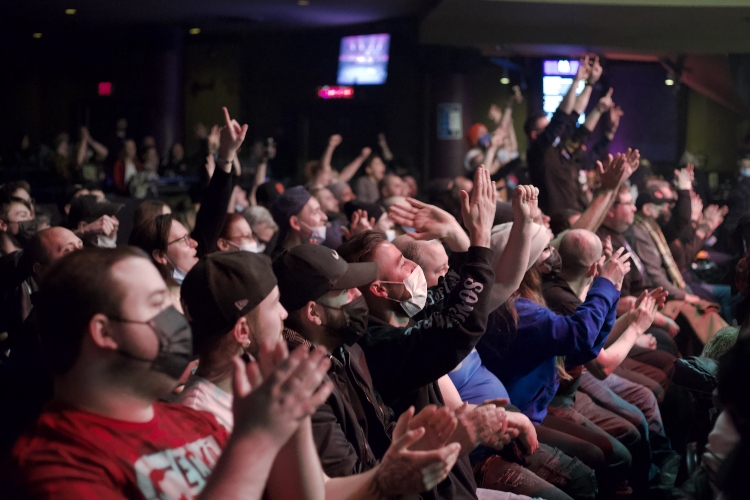
Fans cheer as a wrestler is thrown over the ropes of the ring. Photo by Anna Justen.
The event was hosted by the International Wrestling Syndicate – a massive pro wrestling company with multiple TV deals and a top wrestling school. The IWS was founded 23 years ago by pro wrestler Manny.
He says Saturday night was “a little bit of normalcy,” especially given the physical and political divisions brought up by COVID-19. “It gets really weird when you haven’t seen a lot of people in two years and then suddenly you’re in a room with all of them. It feels good.’
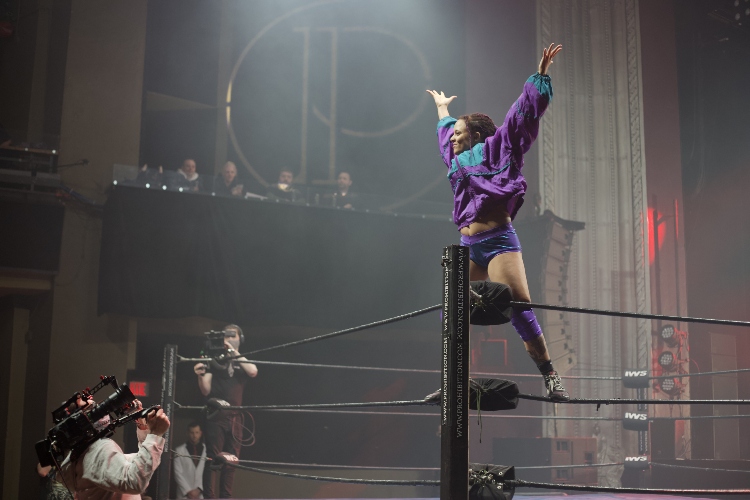
The Sweet Pea Kristara hypes up the crowd before her fight. Photo by Anna Justen.
Since the sport and its athletes first gained recognition here in Quebec sometime in the 1930s, the province has been a key player in producing pro-wrestling stars.
Sixty-five professional wrestlers have been signed out of Quebec, compared to 42 from Ontario, and 23 from British Columbia.
Timeline of the career runs of some of the biggest names in Quebec wrestling. Timeline by Anna Justen.
Dru Onyx is a wrestler of 22 years, as well as the head trainer and owner of the Torture Chamber Pro Wrestling Dojo.
“Quebecers, over the years, always loved a good fight,” Onyx says. “They love boxing, they love aggressive hockey, and they love wrestling.”.

Dru Onyx instructs his students at the Torture Chamber Pro Wrestling Dojo in Montreal. Photo by Anna Justen.
As both a sport and a theatrical performance, professional wrestling requires connection and collaboration. So when the pandemic hit, shows, events, and practices were cancelled. This cut many people off from the places they felt they belonged.
Devout loyalty is not exclusive to pro wrestlers. Quebecers have given a home to all sorts of niche sports communities. Video by Amanda Teixeira.
That sense of belonging is an essential human need, according to Darla Fortune, Associate Professor in the department of Applied Human Sciences at Concordia University.
“Much of what we do in life is with the aim to connect to others,” she says.
Fortune says that the physical space itself is hugely important. When we have places to gather and connect with people around shared interests, repeated face to face interactions occur and relationships develop overtime.
“We don’t easily recreate that online. I suspect that people who fared well during the pandemic already had that sense of community established,” she says.
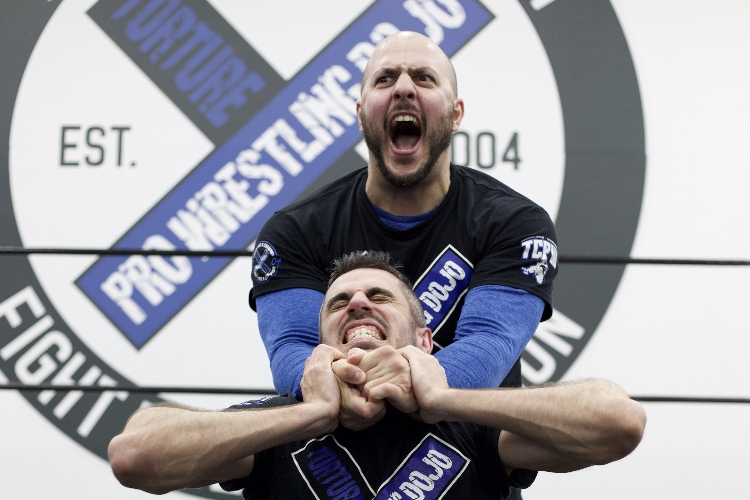
Wrestlers Eddy Erdogan and Victor Castella at Torture Chamber. Photo by Anna Justen.
The wrestlers at Torture Chamber found a way to stay connected and engaged despite physical limitations. Many of these wrestlers had been at the dojo for several years.
“There’s a brotherhood, there’s comradery here,” says Eddy Erdogan, who wrestles under the name ‘The Armenian Assassin.’ “Everyone comes in, there’s mutual respect.”
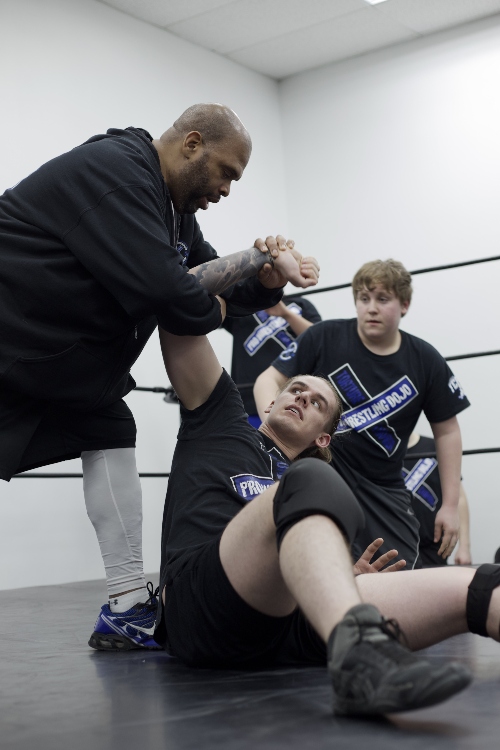
Dru Onyx demonstrates proper technique with Yanic Brouillette during a group exercise. Photo by Anna Justen.
The wrestlers say that staying involved in the sport, even virtually, was very important to them. Onyx moved classes online, where they took the time to learn about the psychology of pro wrestling, promo skills, and the business behind the sport.
Wrestler Victor Castella, or ‘La Pulga Victor’ in the ring, says these types of classes were key to his development as a wrestler.
“We had to learn to be able to talk better, present ourselves better, have ideas outside of the athletic aspect of the sport. I found almost a whole new aspect of wrestling,” he says.
“We adapted. It’s all about adapting,” says Erdogan. “We tried to stay in shape, still do as much as possible. Then once we got the green light, I came back hungry as hell. And I know everyone else did too.”
[slide-anything id=”6163″]
“A sense of urgency” is what Onyx calls it. He sees a new drive in his students. “When the two years stopped, they were like ‘wow, if only I would have come to all the classes, if only I would have practised as hard,’” he says. “Everybody’s like ‘no one misses practice, everyones giving 110%!’”
Regulations have lifted – the eager wrestlers and crowds of fans are back. The energy is infectious. It is clear how happy everyone is to be here. At the events, in the dojo, Onyx says “they’re just fiending for wrestling.”
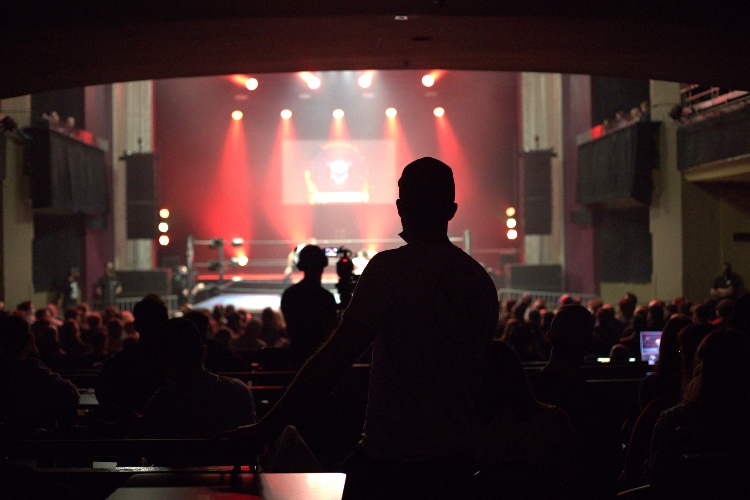
A spectator watches the first fight from the back of the venue. Photo by Anna Justen.
